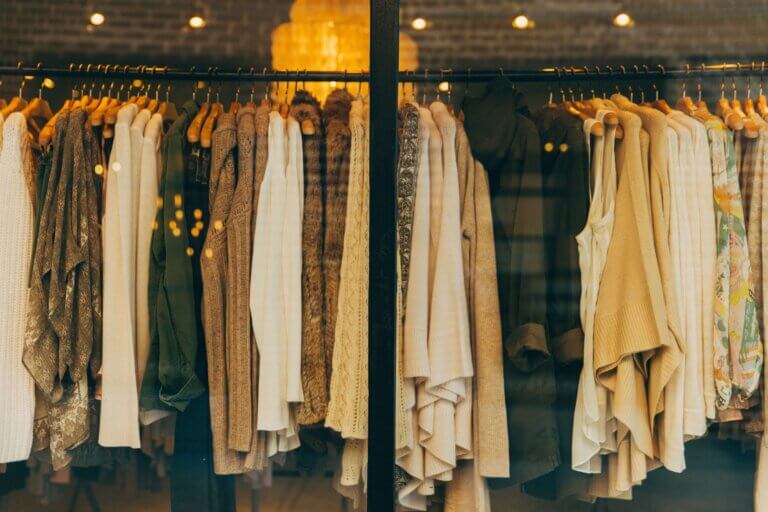
Merch Madness: How to Engage Retail Customers in Off-Peak Season
I’m not a fan of basketball, or any sports for that matter. But March is one of my favorite times of the year, thanks to the pure madness that occurs during the NCAA Men’s Basketball tournament.
I’m not alone, either. Last year, more than 40 million Americans placed over $2B in bets on their favorite college teams. I know what you’re thinking—is that why my conversion numbers go down every March?
The bigger question, though, is how can your brand generate that same level of engagement and excitement during the off-peak seasons of retail? The answer is: through a little something we call Merch Madness.
Here are four strategies for engaging your customers in meaningful ways during even the slowest times of the year.
1. Help Customers Use Your Product Regularly
While tactics like drip email campaigns, promotions, and one-off push notifications can certainly drive engagement, the results of these tactics can be less fruitful in off-peak seasons.
During these times, your best bet is to give customers the tools they need to successfully integrate your product into their lives. Take the Nike App, which offers personalized articles, workouts, and even motivational playlists. These tools encourage customers to use their new running shoes, to don their new workout gear, and to integrate Nike equipment into their lives. The more the user exercises in Nike clothing, the more dependent on the gear they become, and the more quickly they wear out that gear—which increases the frequency with which the user buys Nike products.
This same approach works across industries. Take Sephora: the beauty behemoth’s mobile app offers a ‘Pocket Contour Class’ to provide tailored, step-by-step instructions for contour application, based on the user’s face structure. Like Nike, this feature encourages users to become dependent on Sephora products and to use them regularly. Sure, it also increases sessions, but more importantly it encourages the customer to use their Sephora products.
Teach customers to use what they buy in their everyday lives—whether it’s a pair of headphones, a pair of running shoes, or a new contour kit.
Drive more sales with mobile this holiday season: our checklist will help you stay on track for success throughout the year. Get everything you need in a handy PDF – Download our eBook.
2. Connect With Your Customers’ Values
A staggering 75% of Millennials say it’s either fairly or very important that a company give back to society instead of just making a profit. This values-based approach to shopping gives you the opportunity to connect with your customers beyond selling merchandise.
Approach interactions with customers on the basis of who they are, not what you want them to do. Poshmark, for instance, the fashion resale marketplace app, delivers inspiring and playful push notifications that don’t directly tie into the company’s product.
“We aim for each push notification to feel like a text from a friend who deeply understands them,” said Kate Franco, Senior Director of Merchandising and Product Marketing at Poshmark. Poshmark push notifications include messages such as: “There is no angry way to say bubbles.” This cute and encouraging reminder establishes the brand as a company that cares more about making their customers smile than making a sale.
This strategy can result in major payoff. When Poshmark began experimenting with these push notifications, they saw a 35 percent increase in CTR, as well as a noticeable uptick in users sharing screenshots on social. Today, users open the app on average 7-8 times per day.
3. Make Your Customers Jealous
More than half (56%) of social media users suffer from acute FOMO—Fear of Missing Out. This social anxiety is typically exhibited as a desire to stay constantly connected so as not to miss anything.
As a brand, you can capitalize on this by adding a social element to your push notifications and in-app messaging. For instance, just yesterday my mobile savings app, Ibotta, told me, “Your friend Jennifer verified 6 rebates at Target and earned $4.25 and a chance to win $1000!”
Even though I didn’t need anything from Target, seeing that she “earned” almost $5 and a chance to win more, compelled me to poke around and see if I could stock up on some necessities at Target.
4. Support Customer Hibernation
Many companies fail to recognize the hibernation and hoarding cycle that most users go through. While some customers are consistent spenders, there’s always a healthy contingent of customers who have a peak shopping period and then a rest phase of saving and/or consuming the product. During this time, focus less on directly driving sales and more on staying engaged with your customers throughout their hibernation periods.
There are three primary ways to help your users hibernate and hoard:
Support User-Generated Content
Women’s clothing company, Aerie, launched a user-generated content (UGC) campaign on Instagram that encouraged users to share unedited photos of themselves wearing Aerie products. For every Instagram user that posted with the hashtag #AerieReal, the brand donated $1 to the National Eating Disorders Foundation.
This campaign accomplished two things: it aligned the brand with value-based shopping, and it encouraged users to engage without necessarily spending more.
Promote Referral Programs
Referral programs are an incredibly effective way to encourage hoarding periods, while also gaining word-of-mouth brand reach. Glossier is one of the most successful examples of a retail company that utilized referral programs to drive sales. The D2C beauty brand gives users referral codes that they can use to give first-time purchasers $20 off their first order, and for every person who uses the code, the original user gets $10 off. The program has been so wildly successful that Glossier says 90% of their growth and sales come from peer-to-peer recommendations.
This strategy is highly effective for users who are in a hoarding phase. They rack up points while spreading the gospel of your brand—a win-win for both of you.
Encourage Window Shopping
Invest in driving secondary engagement metrics, like favoriting items or creating looks. The Amazon Wish List or Airbnb lists are both simple examples of how to do this well: users can window shop during hibernation periods, and can then either transfer items from their wish list to their carts or even make wish lists public for birthdays or holidays.
Slam Dunk Your Off-Season
Even when customers dial back their purchasing habits, you can still encourage behaviors that benefit your brand. Remember that March Madness isn’t just about basketball—it’s about putting together dream teams, watching games with friends, unexpected outcomes and engaging in a communal activity. Build this same sense of possibility and community around your brand, and you’ll gain a sustainable boost year-round.
This post was originally published on Prolific Interactive's blog.
Subscribe for updates
If the form doesn't render correctly, kindly disable the ad blocker on your browser and refresh the page.
Related Posts


How Retail App Dinda Uses Push Notifications, Predictive Churn Analytics & More to Grow Revenue
